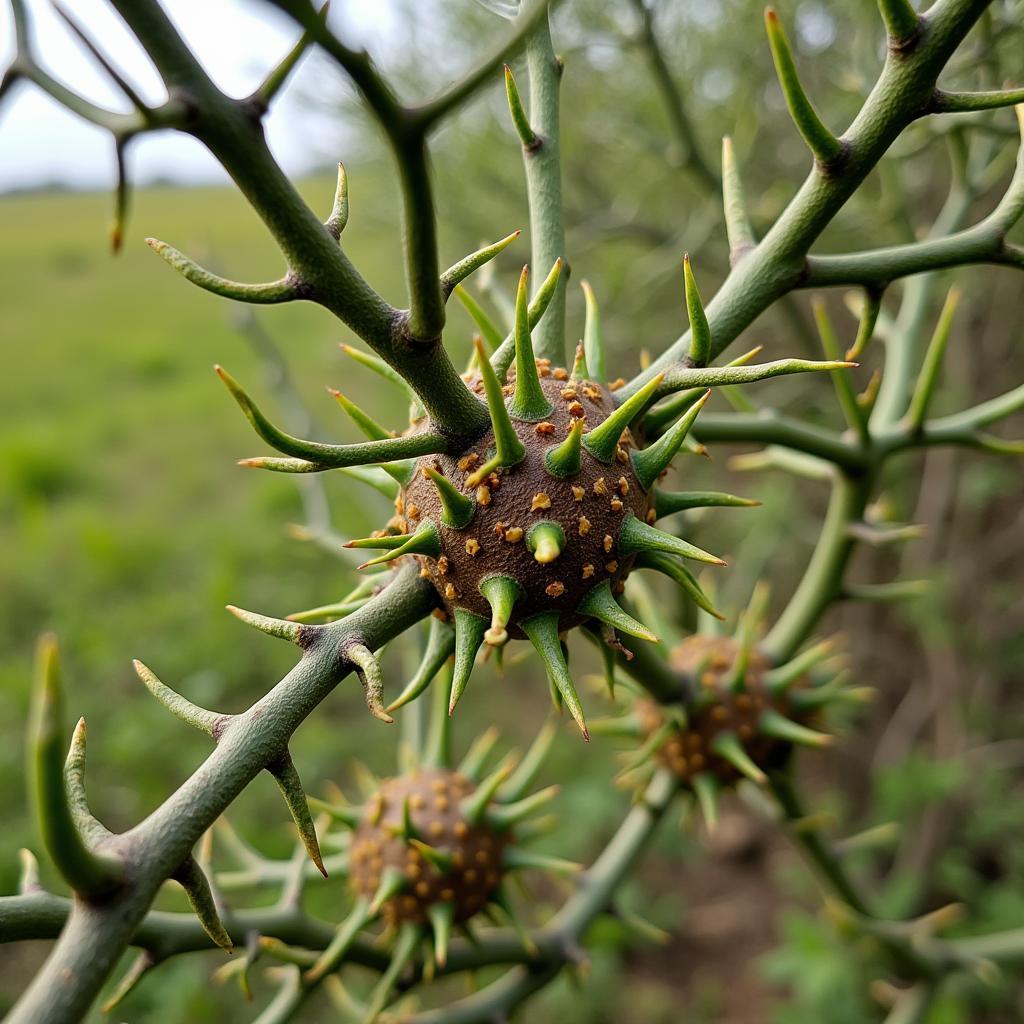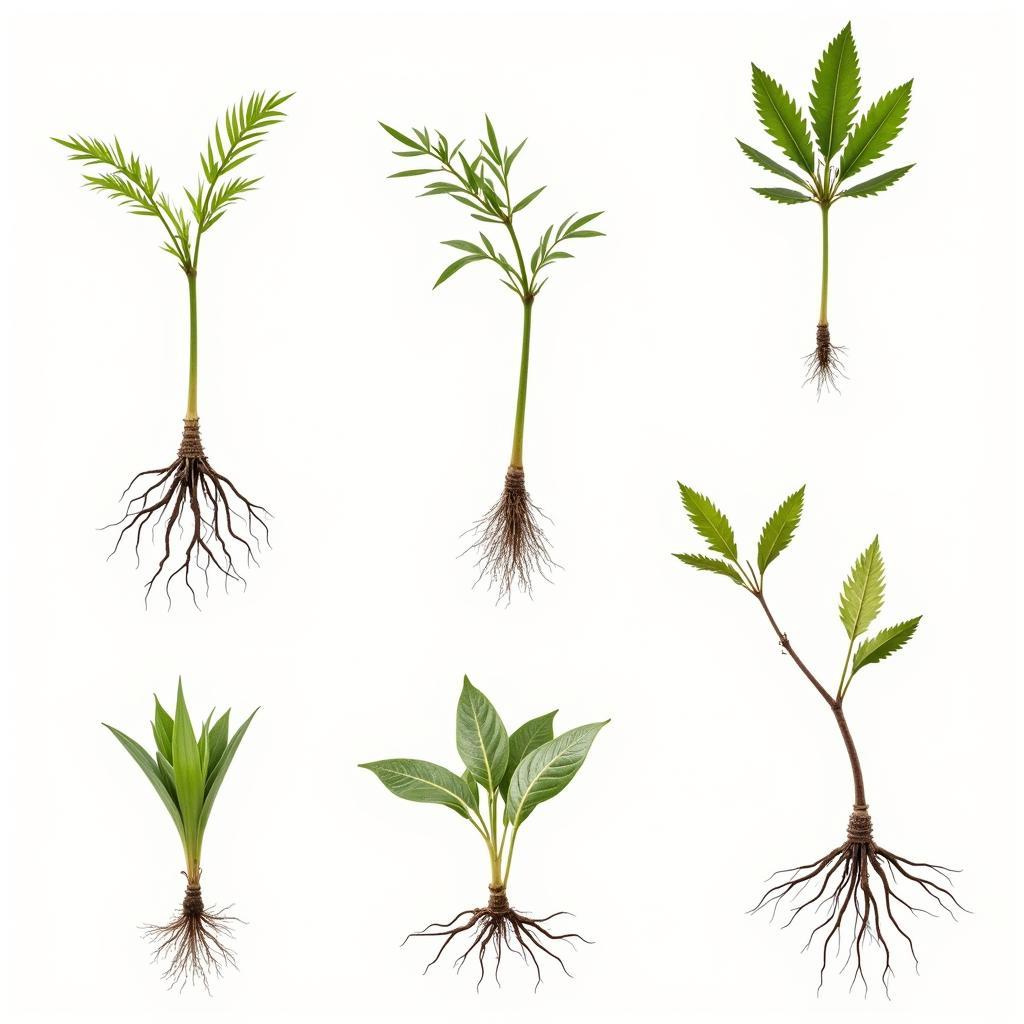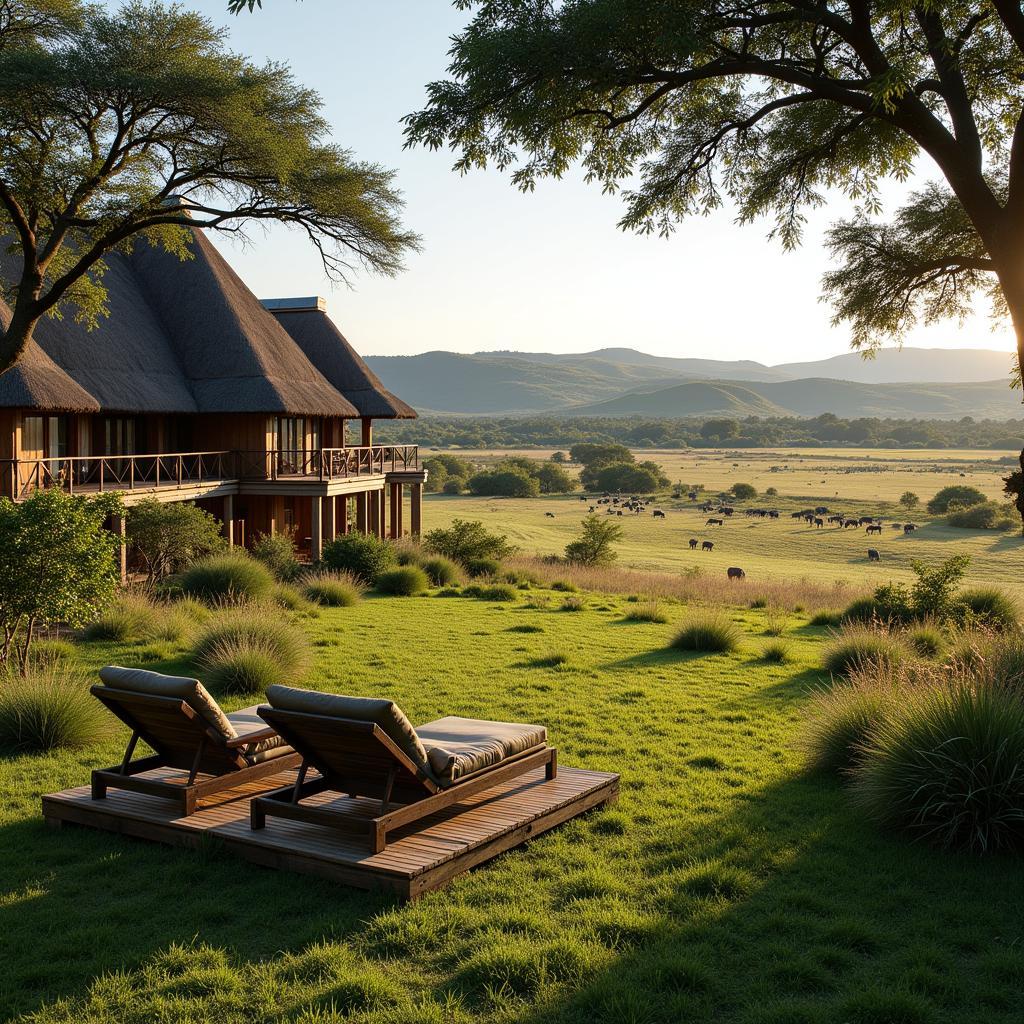Navigating the Thorny Beauty: An Introduction to African Grassland Shrubs
The African grasslands, with their vast expanse and breathtaking beauty, are home to a fascinating array of plant life. Amongst the swaying grasses and towering trees thrive a unique group of plants – African Grassland Shrubs Thorny and resilient. These shrubs, armed with thorns and adapted to survive harsh conditions, play a crucial role in this delicate ecosystem. This exploration delves into the world of these prickly wonders, unveiling their secrets to survival and the vital role they play in sustaining life on the savanna.
Why the Thorns? Unveiling the Defensive Strategies of African Grassland Shrubs
The most striking feature of these shrubs is undoubtedly their thorns. But why the prickly defense? In the heart of the African grasslands, where herbivores roam in abundance, these thorns are not merely for show. They serve as a powerful deterrent against hungry grazers, protecting the shrubs from becoming a meal.
 Thorny shrub on African grassland
Thorny shrub on African grassland
But thorns are not their only defense mechanism. Many of these shrubs have also evolved to produce toxic or unpalatable chemicals within their leaves and stems, further discouraging herbivores from taking a bite.
Masters of Adaptation: Thriving in a Challenging Environment
The African grasslands are a land of extremes – scorching sun, seasonal rainfall, and nutrient-poor soils. African grassland shrubs have evolved remarkable adaptations to thrive in these demanding conditions.
- Deep roots: Many shrubs develop extensive root systems, reaching deep into the ground to tap into precious water reserves.
- Water storage: Some species, like the iconic baobab tree, have evolved succulent stems, capable of storing large amounts of water to endure long periods of drought.
- Small leaves: To minimize water loss through transpiration, many shrubs possess small, leathery leaves or have adapted to shed their leaves during the dry season.
- Fire resistance: The grasslands are prone to seasonal fires. Many shrubs have developed thick bark and the ability to regenerate quickly after fire events, ensuring their survival.
 African grassland shrubs with small leaves and deep roots
African grassland shrubs with small leaves and deep roots
More Than Just Thorns: The Ecological Importance of African Grassland Shrubs
These resilient plants play a crucial role in maintaining the delicate balance of the African grassland ecosystem.
- Food source: While their thorns deter large grazers, certain animals, like giraffes and dik-diks, have adapted to feed on specific thorny shrubs.
- Shelter and nesting sites: The dense, thorny thickets provide crucial shelter for a variety of animals, from birds and reptiles to small mammals. They also offer safe and secure nesting sites.
- Soil stabilization: Their extensive root systems help bind the soil, preventing erosion and promoting soil fertility.
Threats and Conservation: Protecting the Thorny Guardians of the Grassland
Despite their resilience, these shrubs face growing threats, including habitat loss due to agriculture, overgrazing, and climate change. Protecting these vital plants is crucial for the overall health and biodiversity of the African grasslands. Conservation efforts include:
- Sustainable land management: Promoting responsible grazing practices and agricultural techniques to minimize habitat degradation.
- Community-based conservation: Empowering local communities to manage and protect their natural resources.
- Research and monitoring: Conducting research to better understand these shrubs and develop effective conservation strategies.
FAQs: Unraveling the Mysteries of African Grassland Shrubs
What types of animals eat thorny shrubs in the African grasslands?
While many herbivores avoid thorny shrubs, some animals, like giraffes and dik-diks, have adapted to feed on specific species. Giraffes, with their long necks and tongues, can reach high branches and navigate around thorns. Dik-diks, small antelopes, are browsers that can selectively eat leaves and shoots while avoiding the sharp spines.
How do African grassland shrubs survive fires?
Many of these shrubs are fire-resistant, having evolved thick bark and the ability to regenerate quickly after a fire. Some species even depend on fire to stimulate seed germination.
Why are African grassland shrubs important to the ecosystem?
They provide food and shelter for a variety of animals, stabilize the soil, prevent erosion, and contribute to the overall biodiversity of the grasslands.
acacia african plants are a prime example of these shrubs, known for their distinctive umbrella-shaped canopies. They play a vital role in the ecosystems of african dry lands, providing shade, shelter, and sustenance to a myriad of creatures.
Exploring Further:
- Discover more about the fascinating adaptations of African plants.
- Learn about the challenges and triumphs of wildlife conservation in the grasslands.
Contact Us:
For inquiries about African wildlife and conservation efforts, reach out to us at:
Phone: +255768904061
Email: kaka.mag@gmail.com
Address: Mbarali DC Mawindi, Kangaga, Tanzania
We are available 24/7 to assist you.

